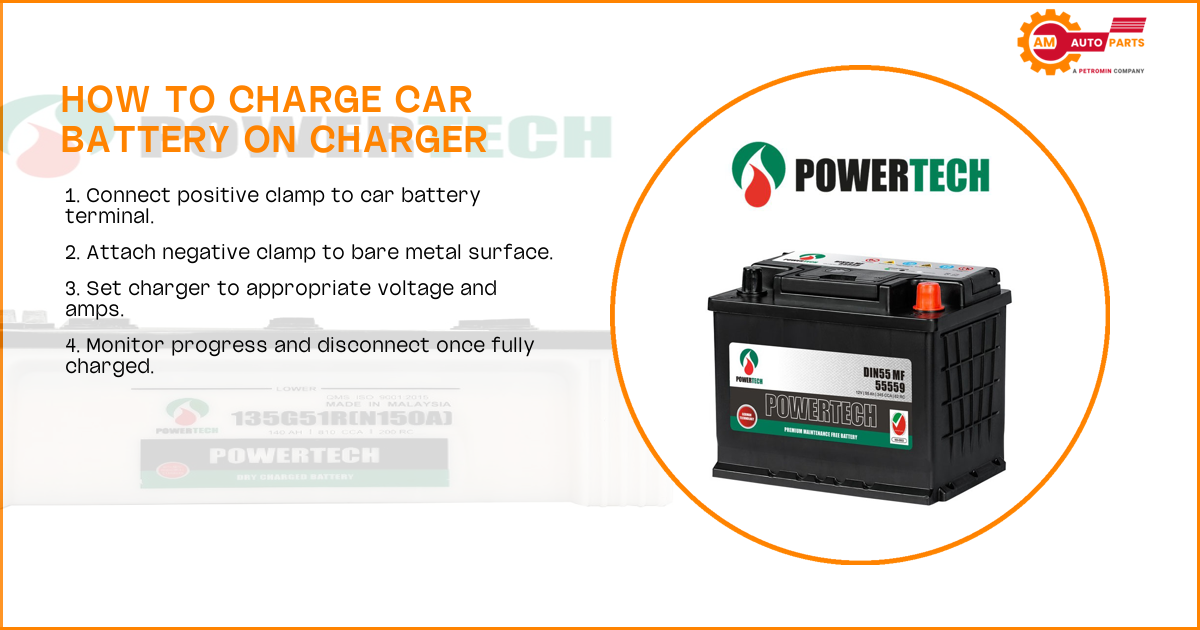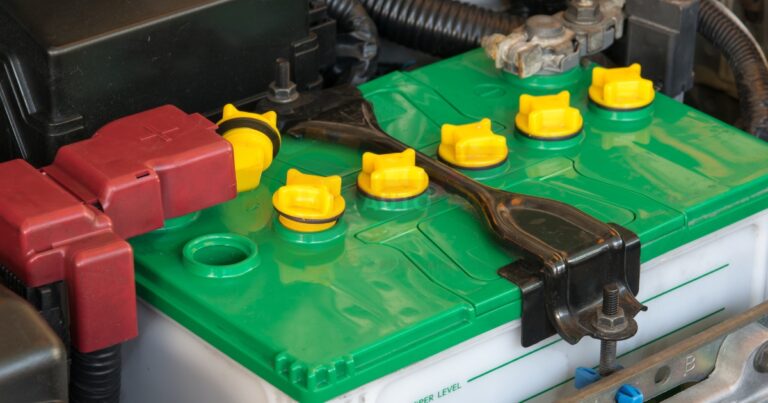How to Charge Car Battery on Charger?
Charging a car battery might seem daunting, but with the right knowledge and tools, it becomes a straightforward task. Whether you’re dealing with a dead battery or simply maintaining your car’s power source, understanding the process is crucial. This guide will walk you through everything you need to know about charging a car battery on a charger.
Understanding Car Battery Charging Basics
Types of Car Batteries and Their Charging Requirements
Car batteries come in various types, each with specific charging needs. The most common types include lead-acid, AGM (Absorbent Glass Mat), and lithium-ion batteries. Lead-acid batteries are traditional and require a slow charging process to prevent damage. AGM batteries, known for their durability, can handle faster charging rates. Lithium-ion batteries, often found in electric vehicles, require specialized chargers to ensure safety and efficiency.
- Lead-Acid Batteries : Require slow charging to avoid overheating.
- AGM Batteries : Can handle faster charging but still need careful monitoring.
- Lithium-Ion Batteries : Need specialized chargers for safe charging.
Importance of Proper Battery Maintenance
Proper maintenance of your car battery can significantly extend its lifespan. Regular checks and cleaning prevent corrosion and ensure optimal performance. Keeping the battery terminals clean and ensuring the battery is securely mounted can prevent unnecessary wear and tear. Additionally, regular charging helps maintain the battery’s health, especially if the vehicle is not used frequently.
- Regular Checks : Prevents corrosion and ensures performance.
- Cleaning Terminals : Avoids unnecessary wear.
- Secure Mounting : Reduces physical damage.
Preparing to Charge Your Car Battery
Safety Precautions When Handling Car Batteries
Safety is paramount when dealing with car batteries. Always wear protective gear, such as gloves and goggles, to protect against acid spills. Ensure the charging area is well-ventilated to avoid the buildup of harmful gases. Disconnect the battery from the vehicle to prevent electrical shorts and ensure the charger is compatible with your battery type.
- Wear Protective Gear : Gloves and goggles are essential.
- Ensure Ventilation : Prevents gas buildup.
- Check Compatibility : Use the right charger for your battery.
Gathering Necessary Tools and Equipment
Before charging, gather all necessary tools and equipment. This includes a compatible battery charger, protective gear, and a multimeter to check the battery’s voltage. Having these tools on hand ensures a smooth and efficient charging process.
- Battery Charger : Must be compatible with your battery type.
- Protective Gear : Essential for safety.
- Multimeter : For checking voltage levels.
Step-by-Step Guide to Charging a Car Battery
Locating and Accessing the Battery
The first step in charging a car battery is locating it. Most car batteries are found under the hood, but some vehicles have them in the trunk or under the rear seat. Once located, ensure the area is clear of any obstructions and that you have easy access to the battery terminals.
- Under the Hood : Common location for most vehicles.
- In the Trunk : Some models have rear-mounted batteries.
- Clear Access : Ensure no obstructions around the battery.
Connecting the Charger to the Battery
Once you’ve accessed the battery, connect the charger. Start by attaching the positive (red) clamp to the positive terminal and the negative (black) clamp to the negative terminal. Ensure the connections are secure to prevent sparking or disconnection during charging.
- Positive Clamp : Connects to the positive terminal.
- Negative Clamp : Connects to the negative terminal.
- Secure Connections : Prevents sparking and disconnection.
Setting the Correct Charging Rate
Setting the correct charging rate is crucial to avoid damaging the battery. Most chargers have settings for different battery types and charging speeds. Refer to your battery’s specifications to determine the appropriate rate and adjust the charger accordingly.
- Refer to Specifications : Check battery manual for details.
- Adjust Charger : Set to the correct rate for your battery type.
- Monitor Settings : Ensure settings remain consistent.
Monitoring the Charging Process
While the battery is charging, it’s important to monitor the process. Check the charger’s display for any error messages and ensure the battery isn’t overheating. Regularly check the voltage with a multimeter to ensure the battery is charging correctly.
- Check Display : Look for error messages.
- Monitor Temperature : Prevents overheating.
- Use Multimeter : Ensures correct charging.
How Long Should You Charge a Car Battery
Factors Affecting Charging Time
Several factors influence how long it takes to charge a car battery. These include the battery’s capacity, the charger’s output, and the battery’s current state of charge. A larger battery or one that is deeply discharged will take longer to charge.
- Battery Capacity : Larger batteries take longer.
- Charger Output : Higher output reduces charging time.
- State of Charge : Deeply discharged batteries need more time.
Recommended Charging Durations for Different Battery Types
Different battery types have varying recommended charging durations. Lead-acid batteries typically require 10-12 hours for a full charge, while AGM batteries may take 4-6 hours. Lithium-ion batteries, due to their efficiency, can charge in as little as 1-2 hours with the right equipment.
Battery Type | Charging Duration |
Lead-Acid | 10-12 hours |
AGM | 4-6 hours |
Lithium-Ion | 1-2 hours |
Troubleshooting Common Battery Charging Issues
Dealing with Deeply Discharged Batteries
A deeply discharged battery can be challenging to charge. Start with a slow charging rate to prevent overheating and gradually increase the rate as the battery begins to accept the charge. If the battery doesn’t respond, it may need professional evaluation.
- Start Slow : Prevents overheating.
- Gradual Increase : As battery accepts charge.
- Professional Help : If battery doesn’t respond.
Addressing Sulfation and Other Battery Problems
Sulfation occurs when lead sulfate crystals form on the battery plates, reducing capacity. Using a desulfation charger can help break down these crystals. Regular maintenance and charging can prevent sulfation and other common battery issues.
- Desulfation Charger : Breaks down lead sulfate crystals.
- Regular Maintenance : Prevents sulfation.
- Consistent Charging : Avoids common issues.
Alternatives to Using a Battery Charger
Jump-Starting a Car Battery
Jump-starting is a quick way to get a car running if the battery is dead. You’ll need jumper cables and another vehicle with a charged battery. Connect the cables in the correct order and start the assisting vehicle to transfer power.
- Jumper Cables : Essential for jump-starting.
- Assisting Vehicle : Provides the necessary power.
- Correct Order : Prevents electrical issues.
Using a Portable Jump Starter
A portable jump starter is a convenient alternative to traditional jump-starting. These devices are compact and can start a car without another vehicle. Ensure the jump starter is fully charged and follow the manufacturer’s instructions for use.
- Compact Device : Easy to carry and use.
- No Assisting Vehicle Needed : Independent power source.
- Follow Instructions : For safe operation.
Maintaining Your Car Battery for Longevity
Regular Battery Checks and Cleaning
Regular checks and cleaning are vital for maintaining your car battery. Inspect the battery for any signs of damage or corrosion and clean the terminals with a mixture of baking soda and water. This prevents buildup and ensures a strong connection.
- Inspect for Damage : Regular visual checks.
- Clean Terminals : Baking soda and water solution.
- Prevent Buildup : Ensures strong connection.
Proper Storage Techniques for Seasonal Vehicles
If you store your vehicle for an extended period, proper battery storage is crucial. Disconnect the battery and store it in a cool, dry place. Consider using a trickle charger to maintain the battery’s charge during storage.
- Disconnect Battery : Prevents discharge.
- Cool, Dry Storage : Avoids damage.
- Trickle Charger : Maintains charge.
When to Replace Your Car Battery
Signs of a Failing Battery
Recognizing the signs of a failing battery can prevent unexpected breakdowns. Common indicators include slow engine crank, dim headlights, and frequent need for jump-starts. If you notice these signs, it’s time to test the battery’s health.
- Slow Engine Crank : Indicates weak battery.
- Dim Headlights : Reduced power output.
- Frequent Jump-Starts : Sign of failure.
Average Lifespan of Car Batteries
The average lifespan of a car battery is 3-5 years, depending on usage and maintenance. Factors such as climate, driving habits, and battery type can influence this lifespan. Regular maintenance can help extend the battery’s life.
Factor | Influence on Lifespan |
Climate | Extreme temperatures reduce lifespan. |
Driving Habits | Frequent short trips shorten lifespan. |
Battery Type | AGM and lithium-ion last longer. |
Choosing the Right Battery Charger for Your Car
Different Types of Battery Chargers
Battery chargers come in various types, each suited for different needs. Trickle chargers provide a slow, steady charge, while smart chargers adjust the rate based on the battery’s condition. Fast chargers offer quick charging but require careful monitoring.
- Trickle Chargers : Slow and steady charging.
- Smart Chargers : Adjust rate based on battery condition.
- Fast Chargers : Quick charging with monitoring.
Features to Look for in a Quality Charger
When choosing a battery charger, look for features such as automatic shut-off, compatibility with multiple battery types, and a clear display. These features ensure safe and efficient charging. Car Battery Voltage is the electrical power stored in a car’s battery Battery replacement threshold is the point when a device’s battery becomes too weak and needs to be changed It helps users know when it’s time to get a new battery for their gadget
Battery voltage range The Push start automobile Cars with
Electrical System Malfunctions happen when parts of the electrical system stop working properly Vehicle power optimization helps cars use less fuel and go farther It makes engines work better so vehicles can be more efficient
- Automatic Shut-Off : Prevents overcharging.
- Multi-Battery Compatibility : Versatile use.
- Clear Display : Easy monitoring.
Environmental Considerations in Battery Charging
Proper Disposal of Old Car Batteries
Proper disposal of old car batteries is crucial for environmental protection. Batteries contain harmful chemicals that can leach into the soil and water. Always recycle batteries at designated facilities to ensure safe disposal.
- Recycle Batteries : Prevents environmental harm.
- Designated Facilities : Ensure safe disposal.
- Avoid Landfills : Protects soil and water.
Eco-Friendly Charging Options
Eco-friendly charging options, such as solar chargers, reduce environmental impact. These chargers use renewable energy to power your battery, making them a sustainable choice for environmentally conscious drivers.
- Solar Chargers : Use renewable energy.
- Reduce Impact : Environmentally friendly.
- Sustainable Choice : For conscious drivers.
By following these guidelines, you can effectively charge your car battery on a charger, ensuring your vehicle remains reliable and ready to go. Regular maintenance and proper charging techniques not only extend the life of your battery but also enhance your car’s overall performance.
Frequently Asked Questions (FAQs)
Can you charge a car battery while it’s still connected?
Yes, you can charge a car battery while it’s still connected to the vehicle. However, it’s safer to disconnect it to prevent any electrical shorts or damage to the vehicle’s electronics. Always ensure the charger is compatible with your battery type.
How do you know when a car battery is fully charged?
A car battery is fully charged when it reaches its maximum voltage, typically around 12.6 to 12.8 volts for a lead-acid battery. Most chargers have an indicator light or display that shows when the battery is fully charged. Using a multimeter can also confirm the battery’s voltage.
Is it better to charge a car battery slow or fast?
Charging a car battery slowly is generally better as it reduces the risk of overheating and extends the battery’s lifespan. Fast charging can be convenient but may cause damage if not monitored properly. Always refer to the battery’s specifications for the recommended charging rate.
Can you overcharge a car battery with a battery charger?
Yes, overcharging a car battery can occur if the charger is left on for too long or set to a high rate. This can lead to overheating and damage to the battery. Using a smart charger with an automatic shut-off feature can prevent overcharging.
Should I disconnect the battery before charging?
It’s recommended to disconnect the battery before charging to prevent any electrical shorts or damage to the vehicle’s electronics. This also ensures a more efficient charging process. Always follow the manufacturer’s guidelines for your specific battery.
What voltage should I charge my car battery at?
The ideal voltage for charging a car battery is between 13.8 and 14.4 volts. This range ensures efficient charging without causing damage. Always refer to your battery’s specifications for the recommended charging voltage.
How often should you charge a car battery?
The frequency of charging a car battery depends on usage and battery type. For vehicles not driven regularly, charging once a month is recommended. Regular use typically keeps the battery charged through the alternator.
Can you charge a completely dead car battery?
Yes, a completely dead car battery can often be recharged, but it may require a slow charging process. If the battery doesn’t hold a charge, it may need replacement. Always use a compatible charger for best results.
What happens if you leave a car battery charging too long?
Leaving a car battery charging too long can lead to overcharging, which causes overheating and potential damage. Using a smart charger with an automatic shut-off feature can prevent this issue. Always monitor the charging process to ensure safety.






